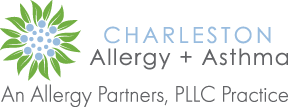Eosinophillic Esophagitis (EoE) is an inflammatory disorder which makes up a set of the eosinophilic gastrointestinal disorders. This condition is characterized by infiltration of the wall of the esophagus with a type of white blood cell, eosinophil. EoE can develop at any age and commonly occurs in individuals with a past history of atopic diseases including allergic rhinitis, food allergy, atopic dermatitis, and asthma. Presenting symptoms in children usually include abdominal pains, vomiting, disinterest in eating, and failure to thrive. Presenting symptoms in adolescents and adults can include heartburn, difficulty swallowing, and most frequently, food impaction. Symptoms of EoE can be similar to those of gastroesophageal reflux but typically with the EoE, aggressive reflux therapy with proton pump inhibitors is usually ineffective in completely controlling symptoms.
The diagnosis of EoE is based on clinical features noted above and pathological data obtained from an endoscopy and biopsy of the esophagus by gastroenterologist. Clinical review studies, for unknown reasons, consistently demonstrate male predominance in EoE. Some series noted two age peaks: One occurring in the first year of life and another occurring between 10 and 14 years of age.
It has been found that approximately 97% of individuals with the diagnosis of EoE will greatly improve with use of an elemental diet (proteins, carbohydrates, and fats broken down into simple building blocks without allergenic protein). This initial finding suggested that food allergies may play a causative or contributing role in the pathology of EoE. Researchers have performed skin prick test and allergy patch tests on individuals with biopsy-proven EoE. Patients with positive prick or patch test to specific foods eliminated these foods and the majority these individuals showed significant clinical improvement in EoE symptoms and repeat biopsy results. The most common causative foods are cow’s milk, eggs, wheat, soy, and meat. Additionally, inhalant allergen sensitization may contribute to the development of EoE. Several patients with EoE and allergic rhinitis have had clinical and biopsy confirmed worsening of EoE during pollen season with improvement during the winter months.
The role of the allergist in the diagnosis and management of EoE includes identifying allergy triggers, managing dietary avoidance, and educating the patient and/or family on the role and mechanisms of food triggers for eosinophilic esophagitis. Allergy testing may include inhalant allergy testing, food allergy prick testing, and food allergy patch testing. Based on results of these tests, an elimination diet may be suggested and monitored by the allergist.
The choice of additional treatment for eosinophilic esophagitis is complicated by a lack of long-term data regarding the various therapeutic options and lack of comparative data. This medical treatment must be individualized to the patient and family and should be carefully monitored by clinical history and followup endoscopy with biopsies.
In EoE patients who do not respond, or show incomplete response to dietary avoidance, acid suppression with proton pump inhibitors is a complimentary therapy which can have additional anti-inflammatory effects. Corticosteroids have a variety of anti-inflammatory actions against eosinophils and both oral and topical steroids can induce remission of EoE symptoms. Long-term use of oral corticosteroids is limited by long-term steroid adverse effects and frequent relapse after discontinuation. Topical corticosteroids, either swallowed oral viscous budesonide or gulped actuations of fluticasone propionate via metered-dose inhaler are the preferred steroid treatment for EoE. Topical corticosteroids provide “local” targeting of eosinophils in esophageal tissue with less systemic side effects. Results of numerous studies have demonstrated effectiveness and safety of topical swallowed corticosteroids in children and adults.
Untreated EoE can result in scarring and remodeling of the esophagus causing poor esophageal motility and strictures which can lead to food impaction.




